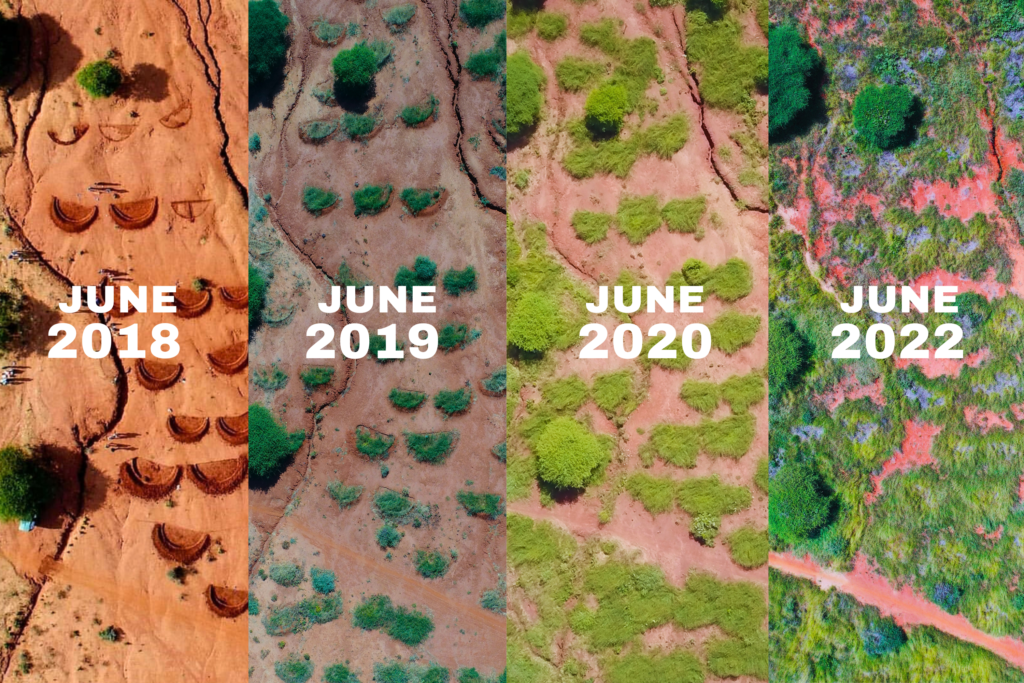When I was in Tanzania in 1993 working with a tree planting project, we compared some different ways of planting trees. One that worked very well was a ”microcatchment” where small ditches were made that would conduct surface water to the tree plants.
I just saw something also in Tanzania that used a similar technique but not directed to specific plants. It increases the amount of surface water that penetrates down into the earth, and at the same time diminishes erosion.
One such project https://justdiggit.org/what-we-do/landscape-restoration/water-bunds/
”The semi-circular shape of the bunds is an optimal balance between the amount of water captured and the labor requirements. Water bunds are usually 2.5 meters long and 5 meters wide …
Water bunds are dug on slopes, with the ‘closed’ side of the earth smile directing downhills. This way they can capture the water running downhills. The water bunds do not only capture the rainwater, they also make sure that the water running downhills in between the water bunds is slowed down. Now the water also has a chance to enter the soil in between the water bunds.”

Picture above from https://www.leadfoundation.org/service/rainwater/
They also write:
”Have you ever wondered why our bunds are semi circular? Their semi-circular shape is an optimal balance between water holding strength, storage capacity and labor requirements.
They are meant to capture as much rainwater as possible when it flows downhill. A round structure is the strongest geometrical structure and is stronger than other alternatives. Therefore, a semi circular bund will more successfully withstand rainwater force of the water stored within.![]() ”
”
I know that round watertanks are stronger and need less material. I’m not sure if the round shape is fully motivated here. In some of their picture it seems that the semicicular wall around a bund has equal height all the way around. I must say that I would expect that the best dimensioning would have the highest height at the middle (=lowest) part and the the top should be horizontal (and taper toward height 0 at the top part.
A bunch of somewhat related techniques: https://www.greener.land/
